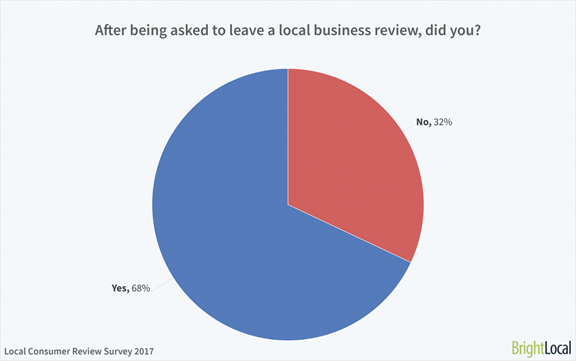Researching a company has become as simple as logging online and typing the business name into a search engine. From reading about product releases to customer testimonials, it’s possible to uncover nearly everything with regards to a business far before purchasing a product or service from the company.
Customer testimonials have the power to both increase and decrease sales. For a company that stands behind the products it sells, favorable reviews can help increase brand credibility while boosting leads and sales.
However, a business needs to understand how to best take advantage of these favorable reviews. Here are some of the best tips and suggestions for highlighting customer testimonials.
More Than a Name
Depending on what a business is selling, it’s best to provide more than just a customer’s name with the review.
When selling an everyday item like a cell phone case or a crate of wine another customer likely won’t have much interest in what other buyers do for a living. However, this changes when the product or service provided is designed for other professionals.
For example, if the head of advertising reviews an Adobe product, including their position within the review, helps demonstrate the importance of the client. It also makes it possible to look up the reviewer to see if they are in fact real.
A company needs to determine whether or not this added information will help future customers. Either way, the added information helps provide more credence to an authentic review.
Many top brands around the Internet include client titles within the given reviews. As Sleek Note points out, the E-commerce giant Shopify often produces hero images that feature not only the reviewer’s title but their photograph as well. This helps illustrate without a doubt the authenticity of the review, which is crucial in correctly managing customer testimonials to increase brand credibility.
(Source)
Allow A Rating Method
Product testimonials are useful, but not everyone wants to read blurb after blurb about a product. They want clear-cut information that instantly indicates how the previous customers liked or disliked a product.
When movie reviews come out there is a review metric clearly displayed in the magazine, website or publishing newspaper. This way, a person will instantly know how the reviewer perceived the movie, all without reading the review. They can then dive into the review for further insights should they want.
The rating isn’t for the business. It is designed to help future customers in making purchase choices. Due to this, there needs to be a clear-cut rating system in place. For example, using a five-star format is easy to read and understand.
Combining both the customer testimonials and the rating scale together provides possible future customers with two points of helpful insights.
First, the customer instantly knows what the average review score is.
Second, they are able to go through both the positive reviews and negative reviews to see if there is a commonality between them.
A rating method makes it easier on potential customers to instantly know what the average review of a product is. According to Bright Local (2017), 54 percent of customers say they look for the average star rating when using testimonials as input into the buying process.
46 percent of those polled said the quality of the reviews is important, while 38 percent said the recency of the reviews plays an impact on whether or not they make a purchase based on the customer testimonials.
(Source)
Customer Testimonials On Product Pages
Providing generalized product reviews on the main page and throughout a website has its benefits, but reviews are most impactful when paired along with the product or service it references.
If a company sells a pop-up tent, it doesn’t do much good to have the review listed on the main page but not on the product page. The customer may not connect the line between the main page review and the product.
In order to help drive home what previous customers think of a product it is best to include these testimonials with the product page.
On websites like Amazon, the product reviews not only follow up on the item description on the base of the page but also additional reviews are found on the side of the display window. This way, no matter how a visitor views the product listing (on a desktop or through a mobile device), the reviews will appear correctly.
Customer testimonials have a direct impact on sales. In fact, including this information on the product page increases sales. According to Econsultancy, pages with included customer reviews experience an 18 percent increase in sales than those without any reviews.
(Source)
Customer Photos
The biggest problem with customer testimonials is not all are real. Far too many websites have caught on to review benefits, and have as such falsified the information.
Due to this, it has become even more crucial for a brand to demonstrate to customers the authenticity of the review. One of the best ways to do this is through customer photos.
These photographs can include the customer using the product. Large retail outlets such as Amazon now allow buyers to upload images along with the review. This instantly adds a level of credibility to the review above and beyond what just the text indicates.
Forbes (2017) provides a list of elements every customer review needs to include in order to generate the most traffic (while demonstrating authenticity). While the most important factor in customer testimonial is a credible source (which is why including the reviewer’s job title is helpful), the second most valuable attribute to promoting a review is using visuals. These visuals include the customer using the product. When bandwidth is available, including a customer testimonial video provides just as much benefit as the photographs.
Ask For a Review
Customers are not always forthcoming with providing a review. Some may perceive it as extra work and so avoid rating the product. Others may simply forget about adding in a customer review. Either way, it’s helpful to ask for a review numerous times.
First, a business should ask the customer for a review following the purchase of the product. Second, they should send out an email after the customer has had time with the product and ask for a review. The gentle reminder may be all that is necessary to help boost review numbers.
Asking for a product review is both easy and effective. According to Bright Local (2017), 68 percent of consumers leave product reviews simply because they are asked. Additionally, as Northwestern University (2017) points out, 80 percent of all reviews posted to a website stem from follow-up emails, asking the buyer to review their overall experience with the product.
In order to build up quality reviews and use the previous sales as fuel for future customers, asking buyers for their input is often all that’s necessary.

(Source)
Don’t Just Allow Positive Reviews
It is important to highlight the positive reviews. After all, a business shouldn’t go out of its way to negatively promote itself. However, that doesn’t mean it should delete or block negative reviews.
Negative reviews help demonstrate the authenticity of a product. Very few products available online have a perfect score. When an E-Commerce storefront selling its own products has a perfect review score it may raise concerns regarding just how real the reviews are. Once a potential customer begins to question the legitimacy of reviews it renders the information void, even if the reviews are factual. Negative reviews help highlight the accuracy of the information because no company would openly point out flaws in its products and services to customers.
Due to this, it is important for a business to allow negative reviews. Of course, in order to allow low score reviews, it does become that much more important for a business to provide quality goods and services. Otherwise, it runs the risk of receiving a less than desirable average customer testimonial.
According to Northwestern University (2017), products with perfect score reviews do not sell as well as products with high (but not perfect) scores. For example, more customers purchased a 4.5 out of 5 rated light bulb. For customers shopping for hair color products, a 4.2 out of 5 rating sold the best while salons with a 4.4 out of 5 received the most business.
Fake reviews are a real problem with online storefronts. That is why it is important to not only allow negative reviews but for the business to avoid writing reviews for its own products as well. Customers are often able to determine when they have read a false review. As Bright Local (2017) highlights, 54 percent of online customers have read at least one fake review in the past year, while 25 percent have read “a lot.” This accounts for 79 percent of customers spotting at least one false review.
(Source)
The same study suggests 70 percent of customers are able to spot fake reviews at least some of the time (with 16 percent reporting they can always spot a fake). Due to this, it is critical for a business to avoid posting fake reviews and to do everything in its power to allow both positive and negative reviews.
In Conclusion
Customer testimonials educate potential customers on how individuals just like themselves used a product. It helps inform the interested individual while pulling back the advertising curtain to shed real light on what a business has to offer. Favorable customer testimonials can increase a company’s brand credibility and awareness. All a business needs to do is follow these tips and suggestions to do just that.








